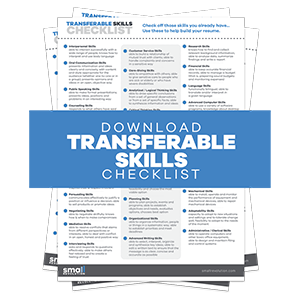When you work online, two things are more important than anything else:
- A functioning laptop
- A reliable internet connection
You cannot get work done without both of these two factors, and without work, you don’t get paid. Lacking in any of these two elements also affects communication with your employer. This could ultimately and unfortunately lead to a loss of work altogether.
A functioning laptop is relatively easy to find and once you have one, you can mostly depend on it.
A reliable internet connection, on the other hand, isn’t always guaranteed. A lot can go wrong and it’s important to have a backup plan if you lose the connection. Here, we’ll look at:
- How to get a reliable connection,
- What can go wrong,
- And what backup plans you should consider implementing should something go wrong.
Ensure a Reliable Primary Internet Connection at Home
Long gone are the days when people used dial-up as their main and only access to the internet. This type of connection went “through” your line, keeping it busy throughout a session. It was like you had a phone call with your internet provider.
It was very slow and unreliable, but it was the only option.
The world took a big sigh of relief once the dial-up connection was replaced with other options. Nowadays, the internet is mostly transmitted through underwater cables. These wires initially used to send telegraphs in the 1850s, now amount to more than 300 worldwide.
Unfortunately, this doesn’t guarantee equal distribution and reliability of the internet. Some areas on the planet have it better than others.
Take for example a major city in the U.S. like New York City, and rural areas in less advanced countries.
Someone living in New York can likely expect fast and reliable internet connections. They can even wonder how anyone lives with slow internet, or worse still, no internet at all. Whereas someone living in rural areas or small cities can’t depend on a good connection. They might even have access to the world wide web for only a few hours each day.
It’s therefore important to look at different options for a primary source of internet. Ones that are dependable and allow you to get your work done.
DSL Internet
DSL stands for a Digital Subscriber Line. This type of internet access utilizes the high frequencies of your landline. Thus enabling you to still have your phone available at all times.
DSL is probably the most common type of internet access and the most widely spread. Once installed in your home, you can distribute it as a Wifi network and access it from multiple devices.
When setting up your DSL, you need a modem and a router to create your home WiFi network. Here is a video that shows how to set it up:
Once you have both of the devices ready, set up a wireless network with a strong password. This ensures that no unwanted “guests” start draining your internet speed.
Cable Internet
Cable internet is connected through coaxial cables by an Internet Service Provider (ISP). These cables are the same ones that provide cable TV. ISPs, as their name suggests, are companies that provide different services such as:
- Web hosting
- Internet access
- Domain name registration
- Internet transit
- And more…
Similarly to a DSL, a home wireless connection is required to work comfortably from all parts of the home. Here is how the cable internet works:
Fiber Internet
This internet connection option is delivered to your home through fiber-optic cables. These are constructed out of bundles of hairline-thin plastic or glass wires. The data in these cables is transferred by light signals. This makes fiber internet remarkably fast and highly reliable.
The only downsides to the fiber option are its availability and high pricing. Fiber tends to be pricier than DSL and cable. Furthermore, you can only access it in areas with appropriate infrastructure.
Wireless Broadband Internet
While the above-mentioned types of internet access use cables, wireless broadband doesn’t. It uses the electromagnetic spectrum between radio waves and microwaves.
In this case, an ISP uses transmission towers to distribute the signal. Users can then install wireless transceivers, which are antennas that resemble satellite dishes.
Choosing which option to use at home takes serious research. You can find details about prices, speeds, and reliability from those around you. However, keep in mind that you need a stronger and faster connection than an average user.
Having a fast and reliable internet connection is one of many behaviors you need to succeed. You can learn about these Successful Behaviors and Habits online at the Small Revolution school. Enroll today to set yourself up for a fulfilling career working from home.
Why You Need a Backup Plan
Unfortunately, things can go wrong with maintaining a fast and reliable internet. Just like with everything else, there are reasons for internet connection interruptions. These include:
Inappropriate Infrastructure
This means that the necessary conditions for an internet connection aren’t met. One such example is the fact that fiber internet can’t be accessed everywhere. Fiber cables need to be installed in your area and yet they’ve only been laid along continental coasts.
You can check the interactive TeleGeography Map to see if there is optic fiber coverage in your area.
Similarly, you can’t count on wireless broadband if there are no towers in your area. Find out whether these are present in your area by contacting ISPs that service your region.
Unreasonable Costs
This usually relates to infrastructure: if internet options are scarce, they are expensive.
You can also face high costs if the ISP in your area has a monopoly and services everyone. When one company controls the internet that enters a country, they can overcharge.
To prevent this, don’t hesitate to shop around before signing a contract.
Unreliable ISPs
Some ISPs are notorious for not providing their services as well as they should. This usually results in intermittent connections and lower internet speeds than originally guaranteed. If you’re not careful, you could lose your money and waste your time on shady ISPs.
To avoid using the wrong Internet Service Provider:
- Ask around for recommendations.
- Read reviews on the different ISP sites.
- Find out what people have to say about the ISPs you’re considering on social media.
- Talk to people around you who already have internet connections.
Slow Internet Speeds
This is definitely one of the most common aggravations online workers have. You will hardly find something as annoying as a crippled internet connection.
This can happen for a number of reasons, including:
- Your package not allowing faster speeds.
- ISPs putting a bandwidth cap.
- Running out of data in your prepaid package.
To resolve issues with your internet speed, follow the tips in this Lifewire article. If these don’t resolve your issues, contact your ISP for help.
Smart Backup Plans
Now that we’ve looked at reliable primary connections and considered what could go wrong, let’s look at good alternatives.
Your backup option should be available to you when your primary option isn’t.
So don’t pick a backup that could fail you alongside your primary choice.
For example: If your internet connection fails because of power outages, don’t use a backup with a modem.
USB Internet Dongles
This is probably the first idea that comes to mind when you think about alternative options. Dongles are usually small USB devices, similar to a USB memory stick. They also contain a SIM card and are often provided by mobile network operators.
Using a dongle is simple, you just need to plug it into your laptop. It then installs a program on your PC and you’re able to connect to your chosen network.
Mobile Hotspots
Mobile hotspots work on a similar principle as internet dongles. They are bigger and also require a SIM card to work, but they don’t need to be plugged into your laptop.
They connect to the mobile network that matches the SIM card and they emit WiFi signals.
Internet speeds can vary depending on your area and the strength of the mobile network.
Satellite Internet
Opting for satellite internet as a backup option can be expensive but worth it. Its biggest advantage is that it’s available almost everywhere. Even in secluded areas where you can’t access other internet options. All you’d need is access to a satellite.
Internet Cafes and Coworking Spaces
When all else fails at home, you can turn to one of two options preferred by remote workers:
- Internet cafes
- Coworking spaces
A lot of cafes, diners, and similar establishments offer paid or free internet access. Request to know each place’s order policy before you set up shop and start working there.
Coworking spaces are venues that resemble the office where a lot of people go to work. Most of these people don’t work for the same employer, however. They’re often freelancers who prefer not to be isolated and networking with others.
Most coworking spaces have monthly membership packages that grant certain levels of access. Some even have open days when you can access the space for free, especially if they’re new. Once you have access to one, you can go there at any time during its open hours.
In Summary
Having a reliable internet connection is absolutely vital to successfully work online. You can ensure access to a primary connection by choosing between:
- DSL internet
- Cable internet
- Fiber internet
- Wireless broadband internet
But something can always go wrong with your primary option such as:
- Being in an area with inappropriate infrastructure.
- Having to pay unreasonable costs.
- Dealing with unreliable ISPs.
- Having slow internet speeds.
It’s therefore crucial to always have a smart backup plan. Alternative options available to you include:
- USB Dongles
- Mobile hotspots
- Satellite internet
- Internet cafes
- Coworking spaces
Give yourself the best chances of succeeding online by having a good plan A and a smart plan B.


